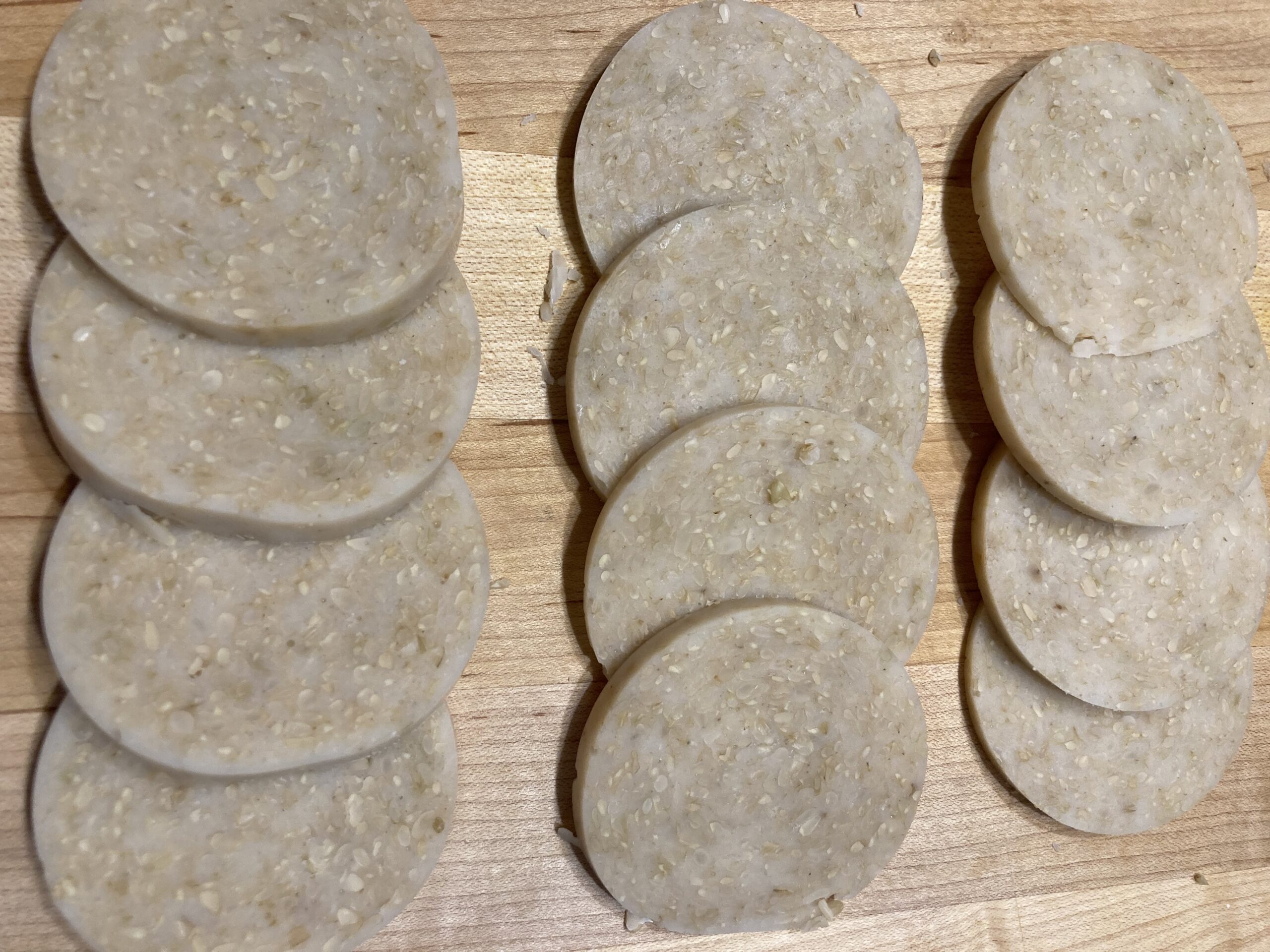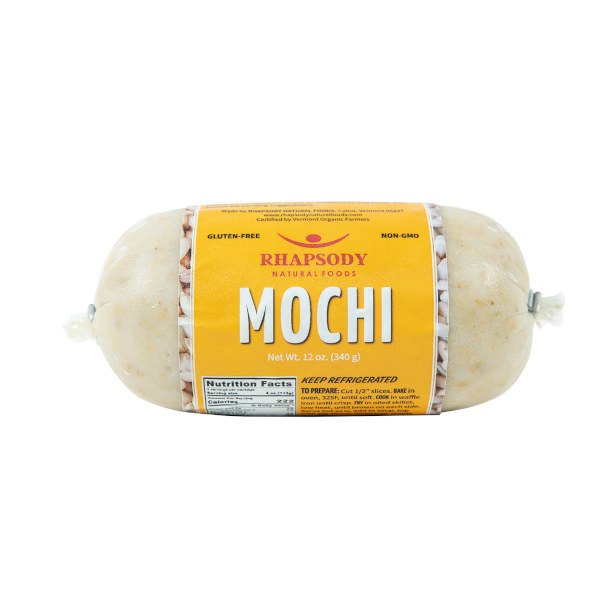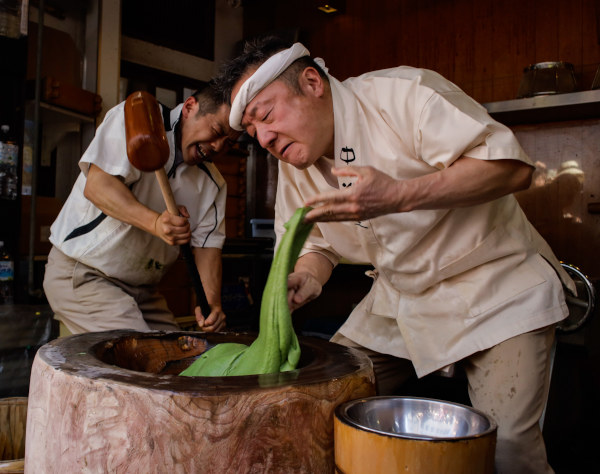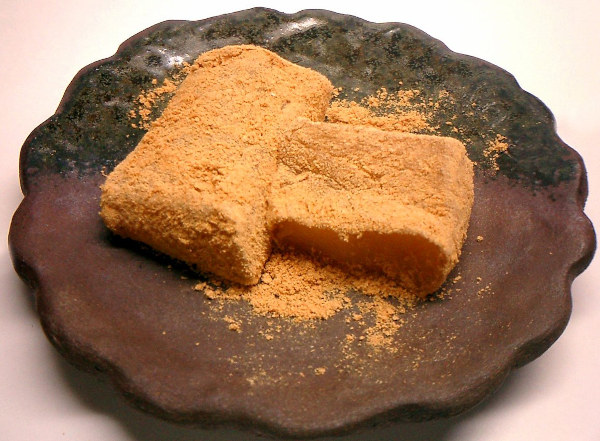
Mochi
Mochi is a traditional Japanese pasty rice cake. Mochi’s sticky-chewy texture comes from the special glutinous (or sweet) rice variety used to make it. Mochi has a mild natural sweetness and is a very nourishing food. Enjoy it, as in Japan, as a delicious wholesome snack or addition to any meal. Rhapsody Mochi is certified organic.
Ingredients: certified organic sweet brown rice, deep well water, sea salt.
Organic Certified, Gluten-free. Low Sodium, No cholesterol. Vegan. Kosher. ![]()
Keep refrigerated or frozen.
For centuries, mochi has been the centerpiece of annual celebrations and rituals, to bring luck and happiness. Nowadays mochi is mostly sold in Japan sweetened and in all kinds of colorful varieties and shapes in confectioneries. Plain mochi is eaten as a strengthening food—to help heal imbalances of the blood, induce mother’s milk, and guard against anemia—and gives overall stamina especially during the cold winter months. Makes a great quick breakfast, too!
Directions:
Stove top: cut the mochi in 1/2” slices, lightly oil a skillet, and fry on low heat for 4 minutes each on both sides or until soft and crusty.
Toaster oven: bake in a toaster oven on a solid sheet, set at medium heat until soft.
Waffle iron: cut and oil 1/2” slices and bake at medium heat in waffle iron until crisp.
Serve hot as is, topped with soysauce, umepaste, maple syrup, jam, or Rhapsody Natto, Miso, or Teriyaki Tempeh or BBQ Tempeh. Particularly nice with a dip of soy sauce, ginger, rice vinegar and sweetener. You can also add mochi to soup at the last minute, or boiled along with the other ingredients to create a creamy consistency.

Mochi waffle.


Slicing mochi.
Traditionally mochi is made by pounding it in this way. One person flips it using wet hands while the other pounds, working in unison. Sometimes mugwort is added to enhance flavor, nutritive value, and bring color.
Frequently Asked Questions About Mochi
Can I freeze mochi?
Better not freeze mochi as this will make it crumbly, although once heated the chewy texture is unaffected.
What about phytic acid in mochi?
Phytic acid is a compound that chelates and thus a double-edged sword: it is thought to prevent the absorption of iron, zinc, phosphorus, and calcium, and magnesium by bonding to it, as well as to a lesser degree, help in the removal of heavy metals from the body.
Quantities of phytic acid are found in grains, beans, nuts, and seeds, including soy and rice. Phytic acid is broken down by phytase, a digestive enzyme released by Aspergillus oryzae (a koji mold) and Rhizopus oligosporus (tempeh’s main mold). Studies have shown that products fermented using these molds have a significantly reduced level of phytic acid. Much is still unknown about phytic acid. That is why a safe approach is to consume a traditional balanced diet consisting of a large variety of home-grown and homemade organic foods, including fermented foods. That’s why Nuka pickles (made by using roasted rice bran) are one of those as of yet mysterious traditional foods that deserve a spot in our diet.
Let’s have some common sense of faith in our ancestors and not throw away the baby with the bathwater!
Tip to neutralize phytic acid: Add some broken-up koji to your grains, beans, nuts, or seeds if you decide you need to soak them overnight to enhance the breakdown of phytic acid, by using the phytase present in the koji.



